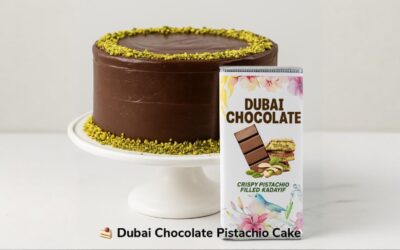Early recipes of white nougat were found in a Middle Eastern book in Baghdad in the 10th century. Even though there’s many legends around the origins of nougat. That nougat was called nāṭif.
Nougat is a family of confections made with sugar or honey, roasted nuts. It could come with different almonds, walnuts, pistachios, hazelnuts, and macadamia, whipped egg whites, and sometimes chopped candied fruit. Nougat consistency is chewy, and it is used in a variety of candy bars and chocolates. The word nougat comes from Occitan, which means ‘nutted’ or ‘nutty’.
There are three basic kinds of nougat. White nougat, Brown nougat and Wiener nougat. White nougat is also known as Persian nougat. It is made with beaten egg whites and honey; it appeared in the early 7th century in Spain with Arabs. Many recipes have been published since the 16th century. For instance “La Generosa Paliza” by Lope de Rueda and other novels written by Cervantes and in Montélimar, France, in the 18th century Nougat of Montélimar. Brown nougat is made without egg whites and has a firmer, and crunchy texture. Wiener nougat is also made without egg whites, but is soft and less chewy than French nougat.
Nougat Variations
Beside having three basic kinds of nougats, they also come in different variations. Spanish Nougat also called Turron, Torrone from Italy and Wiener Nougat from Vienne.
Spanish nougat known as turrón follows the traditional recipes with toasted almond nuts, sugar, honey, and egg whites.
Torrone from Italy includes these same basic ingredients as well as vanilla or citrus flavouring, and is often sandwiched between two very thin sheets of edible rice paper. The Venetian town of Cologna Veneta is well known for its nougat production, especially the type called mandorlato[ mandorle in Italian; this type is also based on honey, sugar, egg whites, and almonds but has a different flavour and is harder to bite than torrone.
Wiener viennese nougat is a variant that contains only sugar, cocoa butter, nuts, and cocoa mass and has a mellow consistency, with a delicious hazelnut. In Germany and the Nordic countries, Viennese nougat is traditionally labelled as nougat, while in Sweden and Denmark, the original nougat is referred to as “French nougat”. In Germany, gianduja is traditionally called nougat.
Ethnology Sweet offers 4 different types of nougats. Aledi Torrone with Almonds, Aledi Torrone Pistachio, Giusto Torrone Lemon and Giusto Torrone Pistachio. All these varieties can be found in our website at www.ethnologysweets.com.
Explore all our wide selection of sweets, chocolates, cookies, coffee and tea that can be paired with your favorite torrone, nougat or Wiener.




